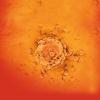Using an artificial intelligence (AI) tool that emulates how humans visualise and is trained to recognise and classify images, investigators constructed a model that predicts the postoperative recurrence of Crohn’s disease with high accuracy by evaluating histological images.

The AI tool also revealed previously unrecognised differences in adipose cells and significant differences in the extent of mast cell infiltration in the subserosa, or outer lining of the intestine, comparing patients with and without disease recurrence.
The 10-year rate of postoperative symptomatic recurrence of Crohn’s disease, a chronic inflammatory gastrointestinal disease, is estimated at 40%.
There are scoring systems to evaluate Crohn’s disease activity and the existence of postoperative recurrence, but no system had been developed to predict whether Crohn’s disease might recur.
Lead author Takahiro Matsui said: “Most of the analysis of histopathological images using AI in the past have targeted malignant tumours. We aimed to obtain clinically useful information for a wider variety of diseases by analysing histopathology images using AI. We focused on Crohn’s disease, in which postoperative recurrence is a clinical problem.”
Sixty-eight patients with Crohn’s disease who underwent bowel resection were included in the study.
Image credit | Shutterstock




